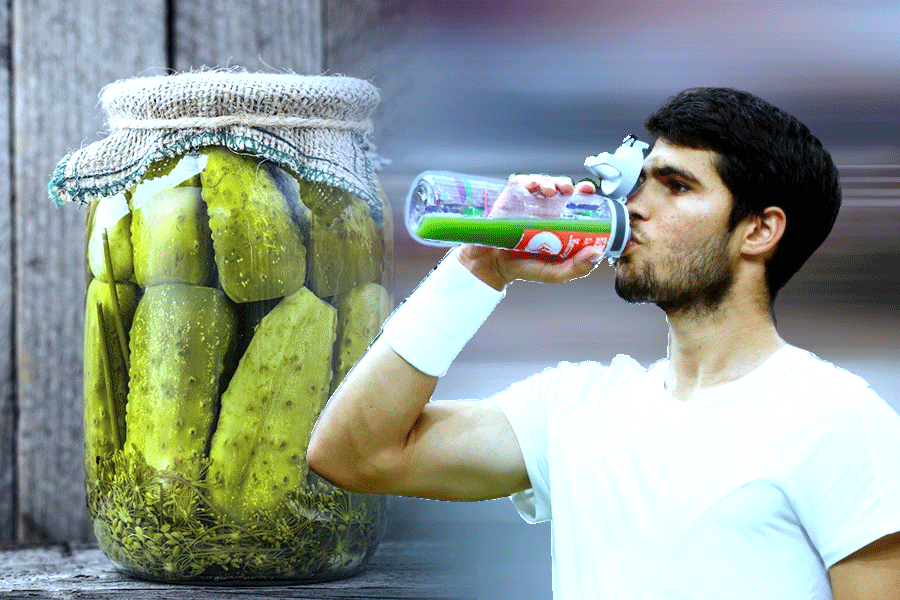It might sound absurd at first. In the middle of one of the most physically demanding Grand Slam finals in recent memory, Carlos Alcaraz reached for pickle juice — not for taste, but for survival.
The 22-year-old Spaniard’s victory over Jannik Sinner at Roland Garros was as much about stamina as it was about skill.
Lasting over five hours and stretching into a fifth-set super tiebreaker, the match was a test of endurance under the punishing Parisian sun. And if there’s one opponent more unpredictable than a red-hot Sinner, it’s muscle cramps.
From pain to precision
Alcaraz is no stranger to cramping. In a previous French Open match against Novak Djokovic, what began as a thrilling contest turned heartbreaking after cramps overtook him — not just in his legs, but in his arms and even his core. It wasn’t a question of talent; it was biology turning traitor.
Fast forward to this year’s final. Learning from experience, Alcaraz came better prepared — physically, mentally, and perhaps even nutritionally. Between games, he was seen sipping something in a small bottle. That something? Reportedly, pickle juice.
Pickle juice phenomenon
Pickle juice — the salty, sour liquid leftover from pickled cucumbers — has quietly become a secret weapon for athletes looking to combat muscle cramps mid-match. It’s strange, it’s unorthodox, and surprisingly, it’s backed by science.
While sports drinks like Gatorade aim to replenish electrolytes gradually, pickle juice acts fast. In some studies, athletes who consumed small amounts of it during a cramp recovered significantly quicker — sometimes within 85 seconds. Not because the juice rehydrates them (it doesn’t act that fast), but because of how it affects nerve reflexes.
The prevailing theory? The vinegar in pickle juice activates receptors in the mouth and throat that send signals through the nervous system, interrupting the misfiring that causes cramps. Think of it as a neurological reset.
Science meets grit
The broader question remains: why do cramps happen at all? Scientists still don’t fully agree. Some blame dehydration or a salt imbalance. Others point to neuromuscular fatigue, especially under extreme stress or emotional pressure — both of which are plentiful during a Grand Slam final.
But what’s clear is that managing cramps is becoming a critical part of elite athletic performance. With razor-thin margins separating champions from contenders, the ability to stay physically intact may matter more than ever.
New kind of preparation
In a world where athletes track sleep cycles with wearable tech and monitor glucose levels mid-match, it’s almost poetic that something as humble as pickle juice can still make a difference. It’s not glamorous, but it works.
Carlos Alcaraz’s win wasn’t just about a booming forehand or youthful courage — it was about adaptation. In the toolbox of modern tennis, where every detail counts, pickle juice might just be one of the most quietly revolutionary tools of all.
What is pickle juice (brine)?
Classic pickle brine is made from a blend of white vinegar, white sugar, kosher salt, and water. Additional flavorings like pickling spices, red wine vinegar, herbs, and peppers can be added to enhance the taste. Essentially, pickle brine and pickle juice are the same thing—they're just two names for the same flavorful liquid.


